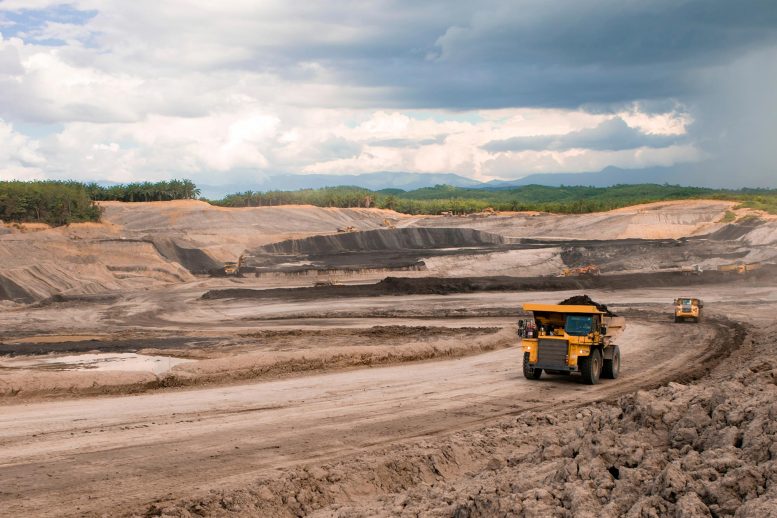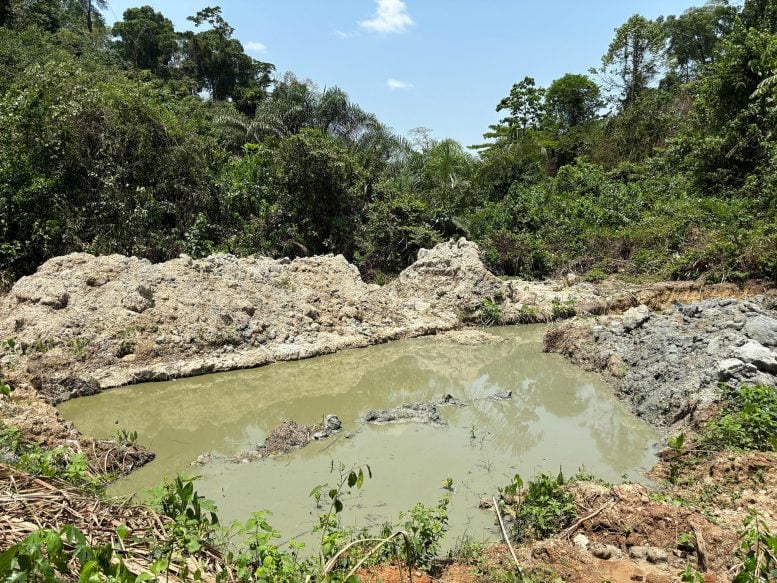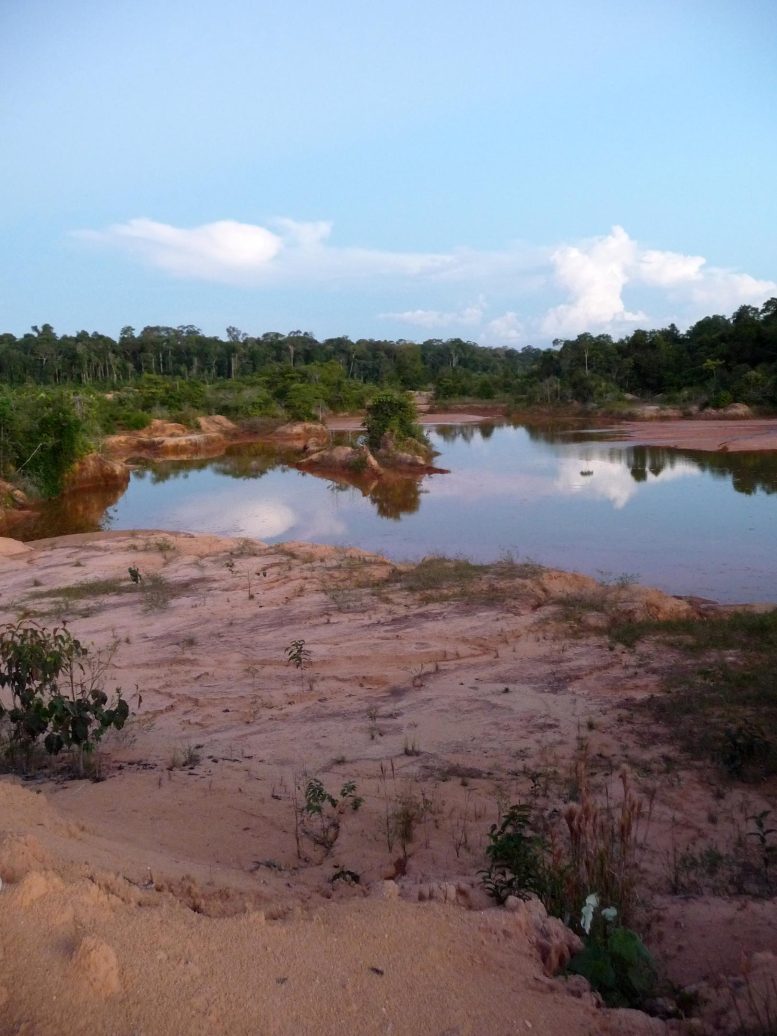
New research shows that 4,642 vertebrate species globally are at risk due to mineral extraction activities such as mining and drilling.
This impact is most profound in biodiversity hotspots where materials like lithium and cobalt, essential for clean energy technologies, are mined. The research suggests that mitigating mining pollution could substantially reduce biodiversity loss, providing a practical way forward without compromising the need for essential materials.
Global Impact of Mining on Biodiversity
A comprehensive study has found that 4,642 species of vertebrate are threatened by mineral extraction around the world through mining and quarrying, and drilling for oil and gas.
Mining activity coincides with the world’s most valuable biodiversity hotspots, which contain a hyper-diversity of species and unique habitats found nowhere else on Earth.
The biggest risk to species comes from mining for materials fundamental to our transition to clean energy, such as lithium and cobalt – both essential components of solar panels, wind turbines, and electric cars.

The Construction Industry’s Role in Habitat Destruction
Quarrying for limestone, which is required in huge amounts for cement as a construction material, is also putting many species at risk.
The threat to nature is not limited to the physical locations of the mines – species living at great distances away can also be impacted, for example by polluted watercourses, or deforestation for new access roads and infrastructure.
Strategies to Mitigate Environmental Damage
The researchers say governments and the mining industry should focus on reducing the pollution driven by mining as an ‘easy win’ to reduce the biodiversity loss associated with mineral extraction.
This is the most complete global assessment of the threat to biodiversity from mineral extraction ever undertaken. The results are published today in the journal Current Biology.

Balancing Mining With Biodiversity Conservation
“We simply won’t be able to deliver the clean energy we need to reduce our climate impact without mining for the materials we need, and that creates a problem because we’re mining in locations that often have very high levels of biodiversity,” said Professor David Edwards in the University of Cambridge’s Department of Plant Sciences and Conservation Research Institute, senior author of the report.
He added: “So many species, particularly fish, are being put at risk through the pollution caused by mining. It would be an easy win to work on reducing this freshwater pollution so we can still get the products we need for the clean energy transition, but in a way that isn’t causing so much biodiversity loss.”
Across all vertebrate species, fish are at particularly high risk from mining (2,053 species), followed by reptiles, amphibians, birds, and mammals. The level of threat seems to be linked to where a particular species lives and its lifestyle: species using freshwater habitats, and species with small ranges are particularly at risk.
The Local Impact of Quarrying on Species
“The need for limestone as a core component of construction activity also poses a real risk to wildlife. Lots of species are very restricted in where they live because they’re specialized to live on limestone. A cement mine can literally take out an entire hillside – and with it these species’ homes,” said Ieuan Lamb in the University of Sheffield’s School of Biosciences, first author of the report.
The Bent-Toed Gecko, for example, is threatened by limestone quarrying in Malaysia – it only exists on a single mountain range that planned mining activity will completely destroy.
To get their results, the researchers used International Union for the Conservation of Nature (IUCN) data to see which vertebrate species are threatened by mining. By mapping the locations of these species they could investigate the types of mining that are putting species at risk, and see where the risks are particularly high.
The researchers discovered that species categorized as ‘vulnerable, endangered, or critically endangered’ are more threatened by mineral extraction than species of lesser concern.
Watercourses can be affected in many ways, and water pollution can affect hundreds of thousands of square kilometers of rivers and flood plains. Mining sand as a construction material, for example, alters patterns of water flow in rivers and wetlands, making birds like the Indian Skimmer more accessible to predators.
Mineral extraction threatens vertebrate species populations across the tropics, with hotspots in the Andes, coastal West and Central Africa, and South-East Asia – which coincide with high mine density. For example, artisanal small-scale alluvial gold mining in Ghana threatens important bird areas through environmental mercury pollution.
Global demand for metal minerals, fossil fuels, and construction materials is growing dramatically, and the extraction industry is expanding rapidly to meet this demand. In 2022 the revenue of the industry as a whole was estimated at US $943 billion.
Biodiversity underpins the protection of the world’s carbon stocks, which help to mitigate climate change.
The study focused only on vertebrate species, but the researchers say mining is also likely to be a substantial risk to plants and invertebrates.
“There’s no question that we are going to continue to mine – our entire societies are based on mined products. But there are environmental tensions embodied in our use of these products. Our report is a vital first step in avoiding biodiversity loss amidst the predicted drastic expansion of the mining industry,” said Edwards.
“Wildlife is more sensitive to mining in some regions of the world than in others, and our report can inform choices of where to prioritize getting our minerals to cause the least damage to biodiversity. Future policy should also focus on creating more circular economies – increasing recycling and reuse of materials, rather than just extracting more,” said Lamb.
Reference: “Global threats of extractive industries to vertebrate biodiversity” by Ieuan P. Lamb, Michael R. Massam, Simon C. Mills, Robert G. Bryant and David P. Edwards, 26 July 2024, Current Biology.
DOI: 10.1016/j.cub.2024.06.077
Never miss a breakthrough: Join the SciTechDaily newsletter.
2 Comments
“The research suggests that mitigating mining pollution could substantially reduce biodiversity loss, providing a practical way forward without compromising the need for essential materials.”
They are being overly optimistic. I would say that they are in denial to expect that reducing pollution will solve the problem. It should be obvious to any objective observer that we are pushing the limits of human population and its need to extract raw materials. Unfortunately, the population problem appears to be an intractable moral issue, often resisted by certain religions. It is becoming a situation of us or them, with respect to wildlife. The raw materials have to be mined where they exist, not where we might want them to be. Also, most of the high-grade metal sources are exhausted and we have had to transition from things that could be mined selectively underground, to expansive open-pits, where huge volumes of rock have to be removed just to access the buried low-grade ore. What’s worse, as the enrichment of the mined essential element(s) decline (lower grade), the volume of excavated rock has to increase in inverse proportion. The problem isn’t as easy as simply keeping acid mine-drainage out of streams. One of the solutions to that has been to use limestone to neutralize the acid. The poor geckos take it on the chin again! There have also been a number of recent, spectacular tailings dam failures both in the USA and in Brazil, causing wide-spread environmental damage, affecting not just humans, but also wildlife. The proposal by the authors, while well-meaning, is the all too frequent bandage approach. The University of Cambridge’s Department of Plant Sciences and Conservation Research Institute does not have the necessary expertise to tackle this problem on their own; they don’t appreciate the magnitude and complexity of the issue. It will require a multi-disciplinary approach, and the political will to allocate the necessary funds to properly address the issue.
Having a senile, poorly-educated autocrat decree the adoption of electrical vehicles, when there is demonstrably insufficient resources, only exacerbates the situation. One of my favorite sayings is, “The road to Hades is paved with good intentions.”
“For example, artisanal small-scale alluvial gold mining in Ghana threatens important bird areas through environmental mercury pollution.”
The blame is misdirected and the problem is more widespread than suggested. The problem is that the poor, uneducated artisanal gold miners are told that they need mercury to extract gold. Amalgamation is almost as old as gold mining itself. However, there are modern alternatives that are probably cheaper and — when net profits and personal safety are considered — more efficient. Additionally, most of the problem comes from heating the gold-mercury amalgam, driving off and losing the mercury as a deadly vapor. If the government were to make retorts, which would capture the mercury and allow re-cycling, available inexpensively to the artisanal miners, the problem would be reduced significantly. Alternatively, the government could buy the gold amalgam directly and provide a fair price, discouraging the miners from putting themselves and wildlife at risk. The problem is ultimately political.